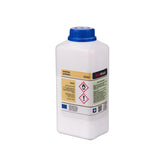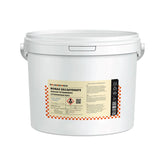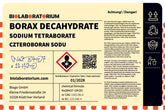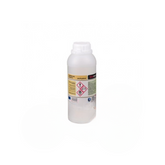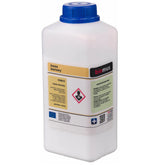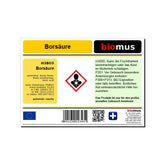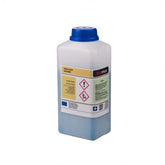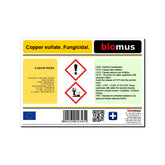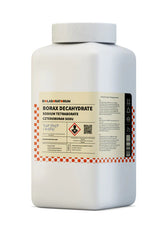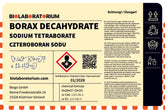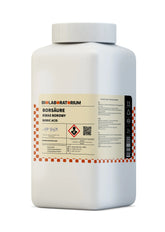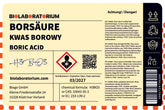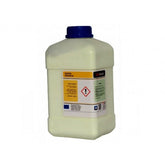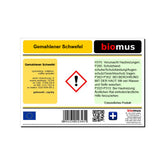Brilliant Yellow – Properties, Laboratory Applications, and Safety
Brillant Yellow, also known as Brilliant Yellow, is an intense yellow dye used in a wide range of applications. Whether in the food industry, textile processing, or laboratory chemistry – this dye is in high demand due to its vibrant color and versatile application possibilities. In this blog post, we take a closer look at the properties, applications, and safety aspects of Brillant Yellow.
The properties of Brillant Yellow
Brillant Yellow is a synthetic dye that belongs to the triphenylmethane dye group. It is characterized by its intense, bright yellow coloration, which is based on its chemical structure. The dye absorbs light in the blue wavelength range of the visible spectrum and reflects the yellow components, resulting in the characteristic coloration.
In addition to its color intensity, Brillant Yellow also impresses with its good solubility in water and organic solvents. This enables its use in a wide variety of products and applications. Furthermore, the dye is relatively stable against light, heat, and chemical influences, which favors its use in various fields.
Chemical structure and properties at a glance:
- Chemical name: Sodium 2,2'-(1,2-ethenediyl)bis[5-nitrobenzen-1-sulfonat]
- Molecular formula: C₁₆H₁₀N₂Na₂O₆S₂
- Molecular weight: 452.38 g/mol
- Intense, bright yellow coloration
- Good solubility in water and organic solvents
- High color stability against light, heat, and chemical influences
Applications of Brillant Yellow
Due to its versatile properties, Brillant Yellow is used in numerous industries. Here is an overview of some of the main application areas:
Food Industry
In the food industry, Brillantes Gelb is used as a colorant for beverages, confectionery, ice cream, and other food products. The dye gives the products an intense, appetite-stimulating yellow hue.
Textile Processing
Brillantes Gelb is also used in textile processing. Here it serves as a dye for natural fibers such as wool and silk, as well as for synthetic fibers. The dye enables an even, durable coloration of the textiles.
Cosmetics and Personal Care
Brillantes Gelb is also used in cosmetic products and personal care items. Examples include decorative cosmetics such as lipsticks, eyeshadows, or nail polishes, as well as shampoos, soaps, and creams.
Laboratory Chemistry
In the field of laboratory chemistry, Brillantes Gelb is used as a fluorescent dye. Due to its fluorescence properties, it serves, for example, for labeling biomolecules or as an indicator in analytical procedures.
Further Applications
Furthermore, Brillantes Gelb is used in printing inks, paints, inks, plastics, and many other products where an intense yellow coloration is desired.
Safety Aspects of Brillantes Gelb
As with all chemical substances, certain safety aspects must be considered with Brillantes Gelb. In principle, the dye is classified as safe for health as long as it is used in the intended applications and concentrations.
Toxicological Assessment
Studies have shown that Brillantes Gelb can be toxic when ingested orally in high doses. Therefore, limits for its use in food and cosmetics have been established. In the approved quantities, however, the dye is classified as safe.
Occupational Safety in the Laboratory
In the laboratory, special caution is required when handling Brillantes Gelb. The dye can be harmful if inhaled, swallowed, or upon skin contact. Therefore, appropriate protective measures such as wearing protective clothing, gloves, and a respirator are necessary.
Disposal
Brillantes Gelb is classified as an environmentally hazardous substance. Therefore, disposal must ensure proper treatment to avoid harm to humans and the environment.
Conclusion
Brillantes Gelb is a versatile dye with impressive properties. Whether in the food industry, textile processing, or laboratory chemistry – the bright yellow dye convinces with its color intensity, solubility, and stability. At the same time, when using Brillantes Gelb, the applicable safety regulations must be observed to minimize health and environmental risks. With proper handling, however, the dye offers numerous possibilities for innovative and high-quality products.
